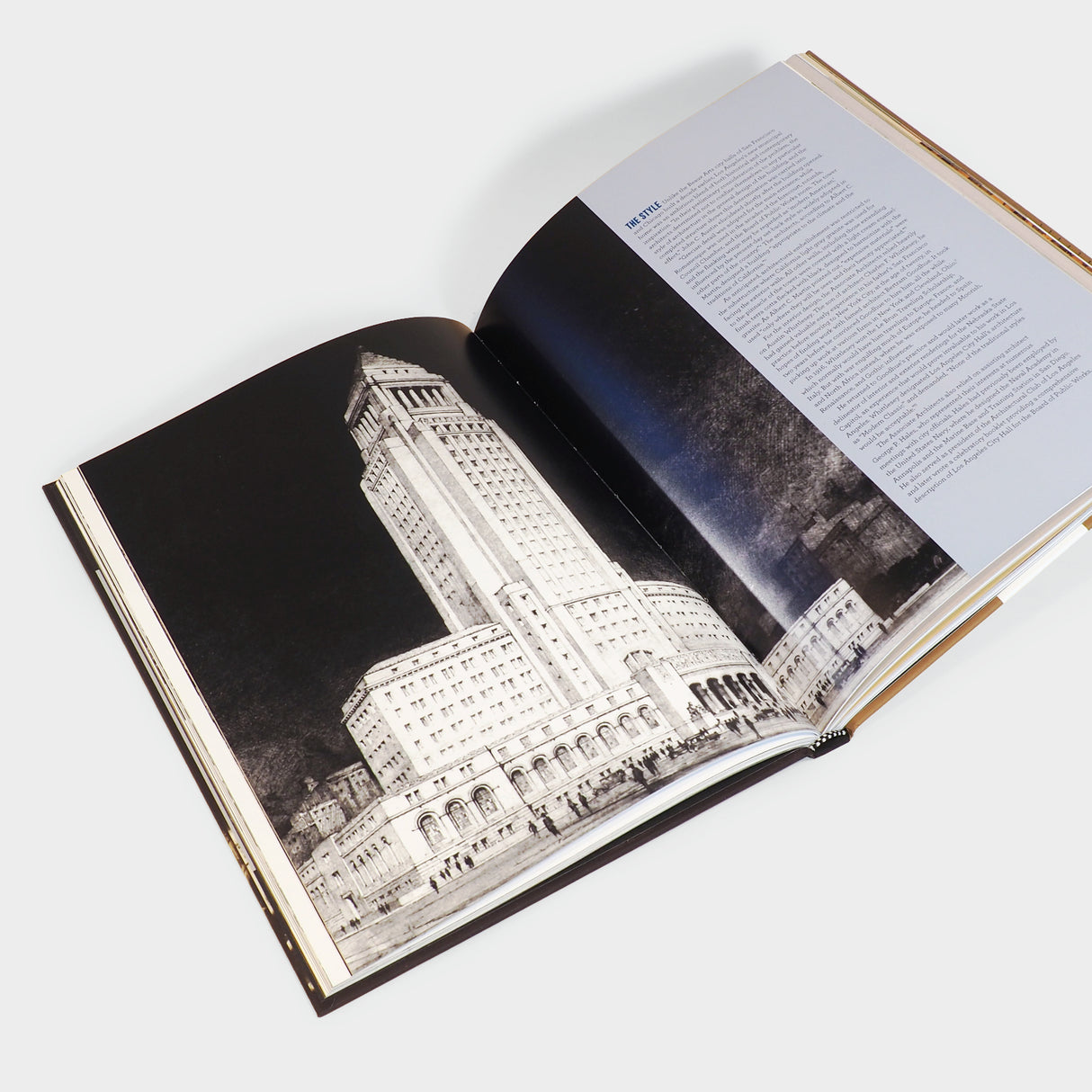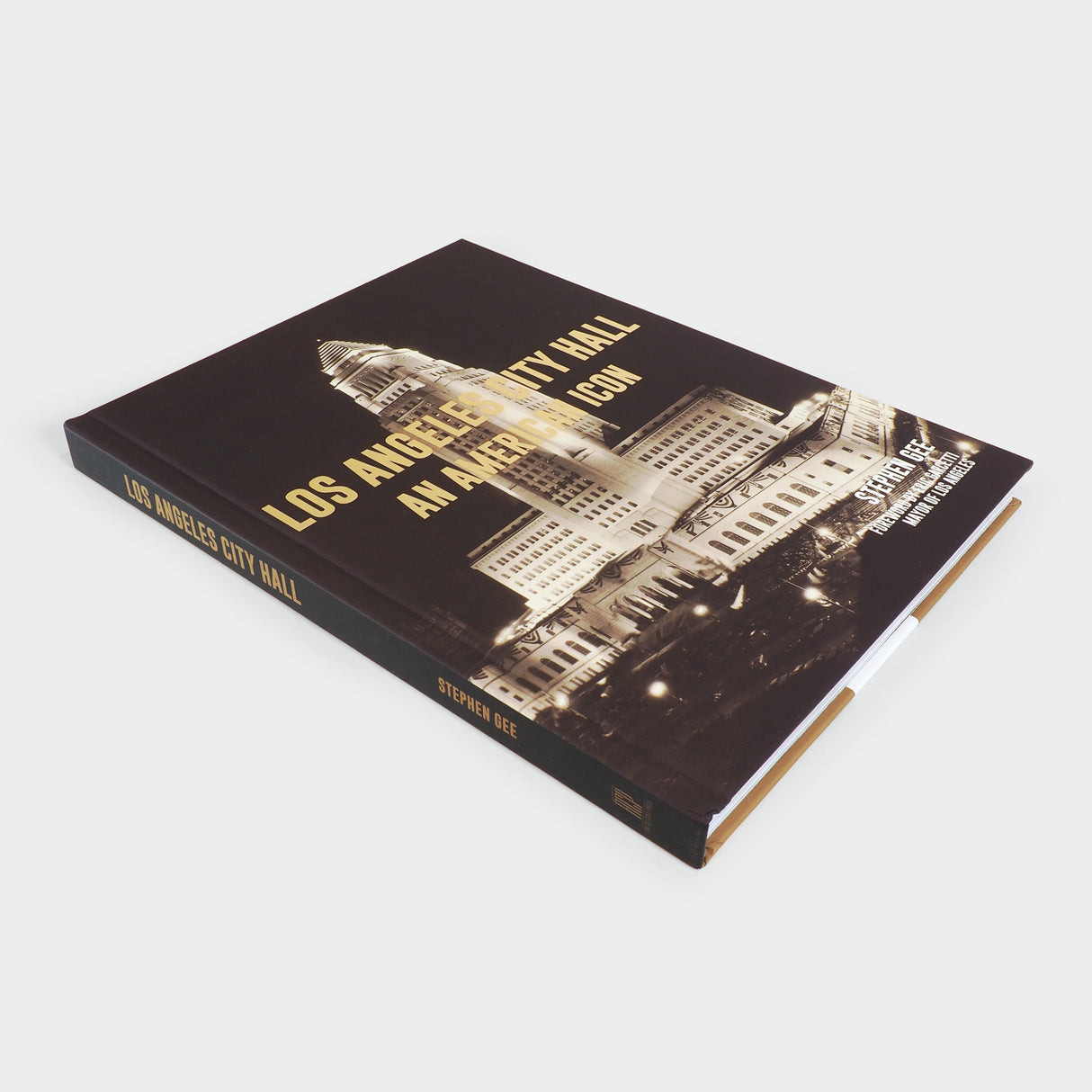Los Angeles City Hall is one of the most iconic buildings in America; some say, the world. A bold symbol of the ambition of America and its people, City Hall graces California as one of its most enduring landmarks. Now comes the definitive book chronicling its history, Los Angeles City Hall: An American Icon.
When it opened its doors in 1928, the new Los Angeles City Hall was the tallest building in the city and undeniably beloved by its people—and they hadn’t even been inside yet. Indeed, more than a half-million people lined the streets to celebrate the dedication of the monolith that symbolized Los Angeles’s successful transition from West Coast outpost to world-class metropolis.
A parade with 32,000 marchers, 34 bands, and 150 floats marked the occasion. Promptly at 7 p.m. Pacific Time on April 26, 1928, President Calvin Coolidge pressed a gold telegraph key in the White House in Washington, D.C., sending the signal cross-country to officially switch on the Lindbergh Beacon atop Los Angeles City Hall, its brilliant beam of light shooting a brilliant message into the night sky: Los Angeles City Hall was complete. The news spread round the world. The next day, when its doors were flung open, 67,000 people poured through its corridors.
City Hall is everything imagined by its early-20th century civic leaders: a structure that speaks to its people of a bright and secure prosperity, showcasing Los Angeles as a place unshackled by the past, ever able to accept all that was new, dynamic, and forward-thinking. On that day some 90 years ago, few Angelenos realized that the entire world was watching. And would be watching its remarkable city forever.
When it was first created, it took three of California’s most accomplished architects to make the boldest statement possible about the city’s ambition, John Parkinson, A.C. Martin, and John C. Austin. Together they created history. In the pages of Los Angeles City Hall: An American Icon, author Stephen Gee shares that story. In the most detailed study of the building ever undertaken, Gee tells the dramatic saga of the building’s creation, including the battles that ensued as it rose to its full twenty-eight stories in a city whose law allowed less than half that number. Gee showcases the architecture, artwork, and details that define City Hall in more than 200 lavish images, blueprints, and drawings—many of them never-before published. Gee also chronicles the effort to restore the building and the political fight that proceeded its return to glory.
As Los Angeles Mayor Eric Garcetti points out in his Foreword: “So much history has been made beneath these muraled ceilings. So many people have walked these marble floors and transformed our city with their ideas, energy, and passion. And that work continues today….”
-
Author InformationStephen Gee







